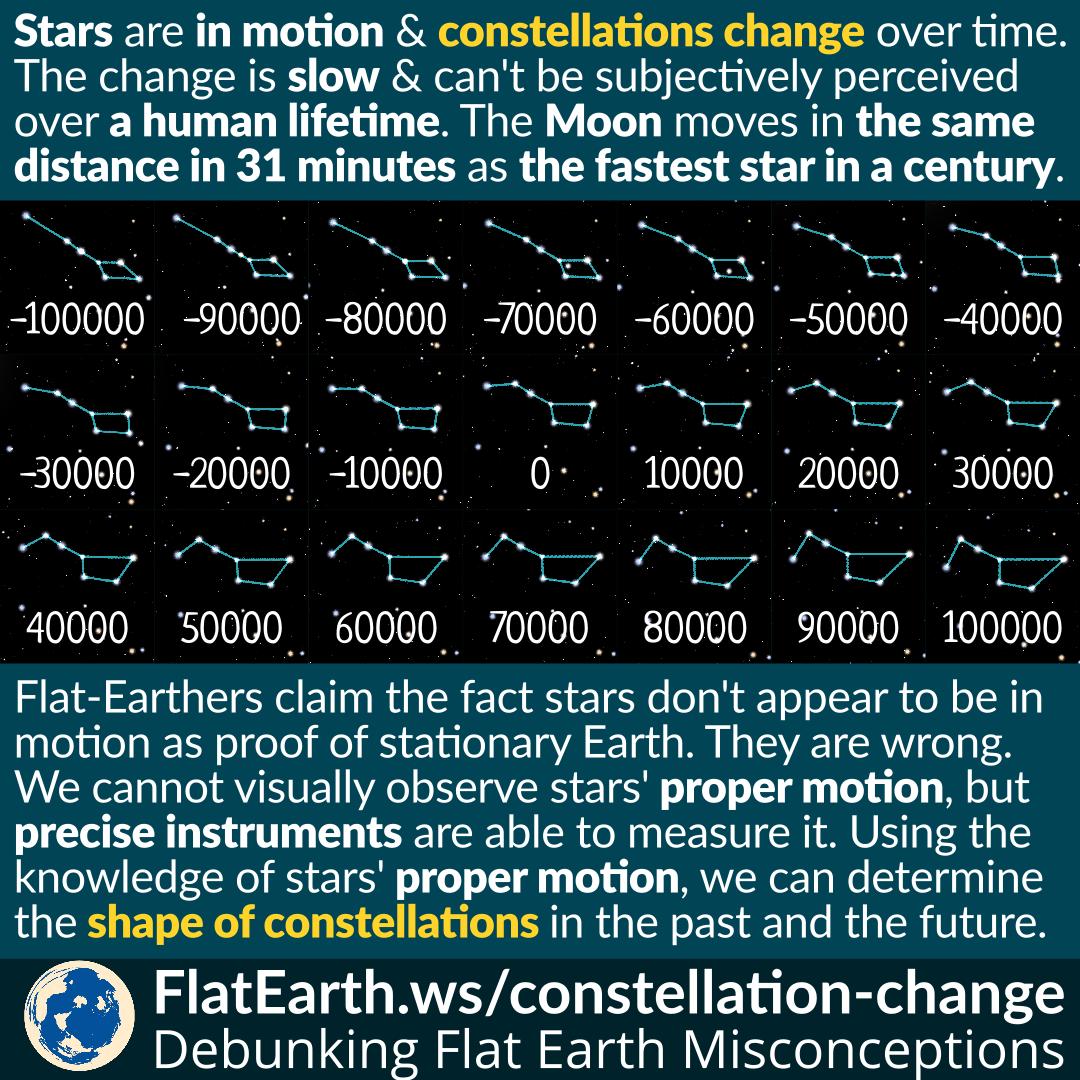We can’t observe stars moving relative to each other, and the shape of constellations looks the same every night. The reason is not that stars are stationary, but their motions are very slow and cannot be observed over the timescale of human life.
Flat Earthers claim that the fact constellations don’t appear to change as proof the Earth is stationary. They are wrong. Stars have proper motion, but they can only be observed using precise instruments over a long time. Constellations do change, but the change is slow and cannot be perceived over the timescale of human life.
Each star has their own proper motion relative to us. The movement is small. Barnard’s Star is the star having the largest proper motion, and it is still too slow for us to casually observe. In a century, Barnard’s Star moves the same distance as the Moon in 31 minutes.
Stars appear to move very slowly because they are very far. The nearest star is Proxima Centauri. It is 4.24 light years away, or about 268 thousands times the distance from us to the Sun.
The shape of constellations changes over a long time. From our knowledge of stars’ proper motion, we can determine the form of a constellation in the past and the future. Just because we can’t visually observe the change, it doesn’t mean they don’t change.
References
- Proper motion – Wikipedia
- Proxima Centauri – Wikipedia
- Constellation – Wikipedia


